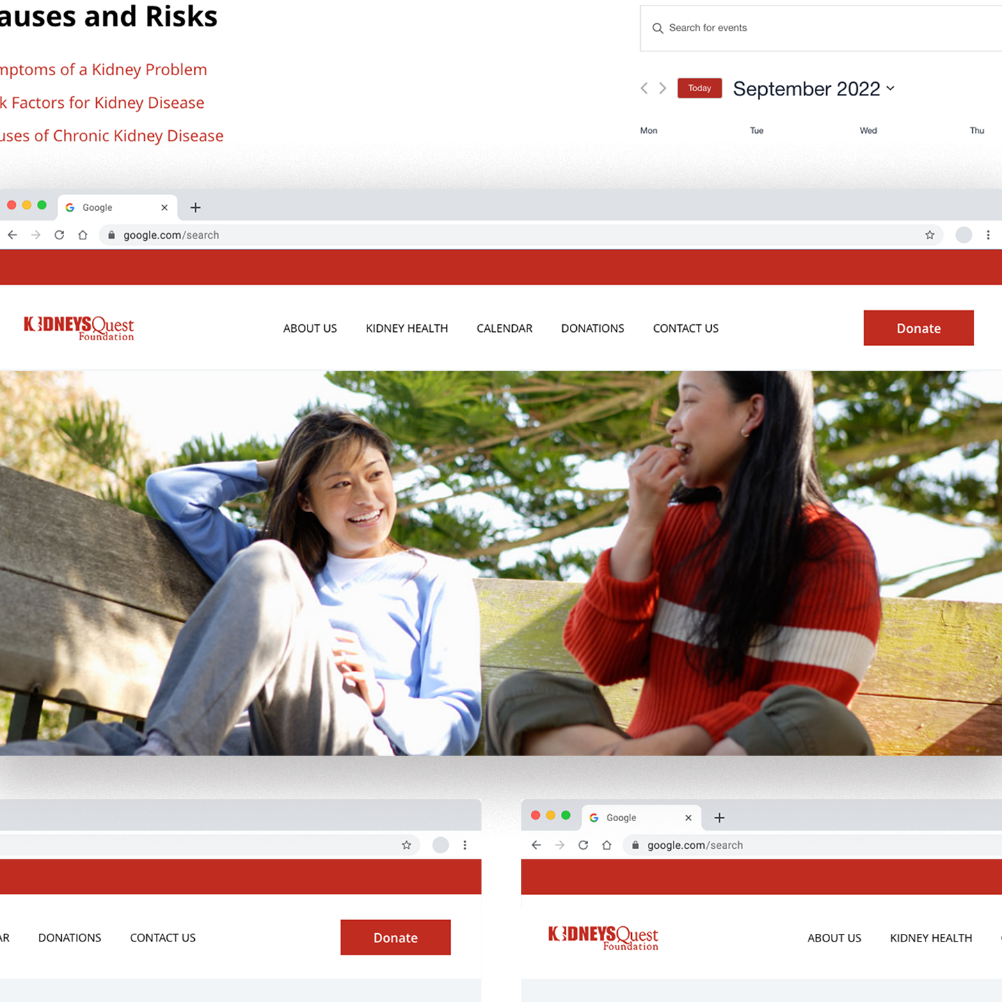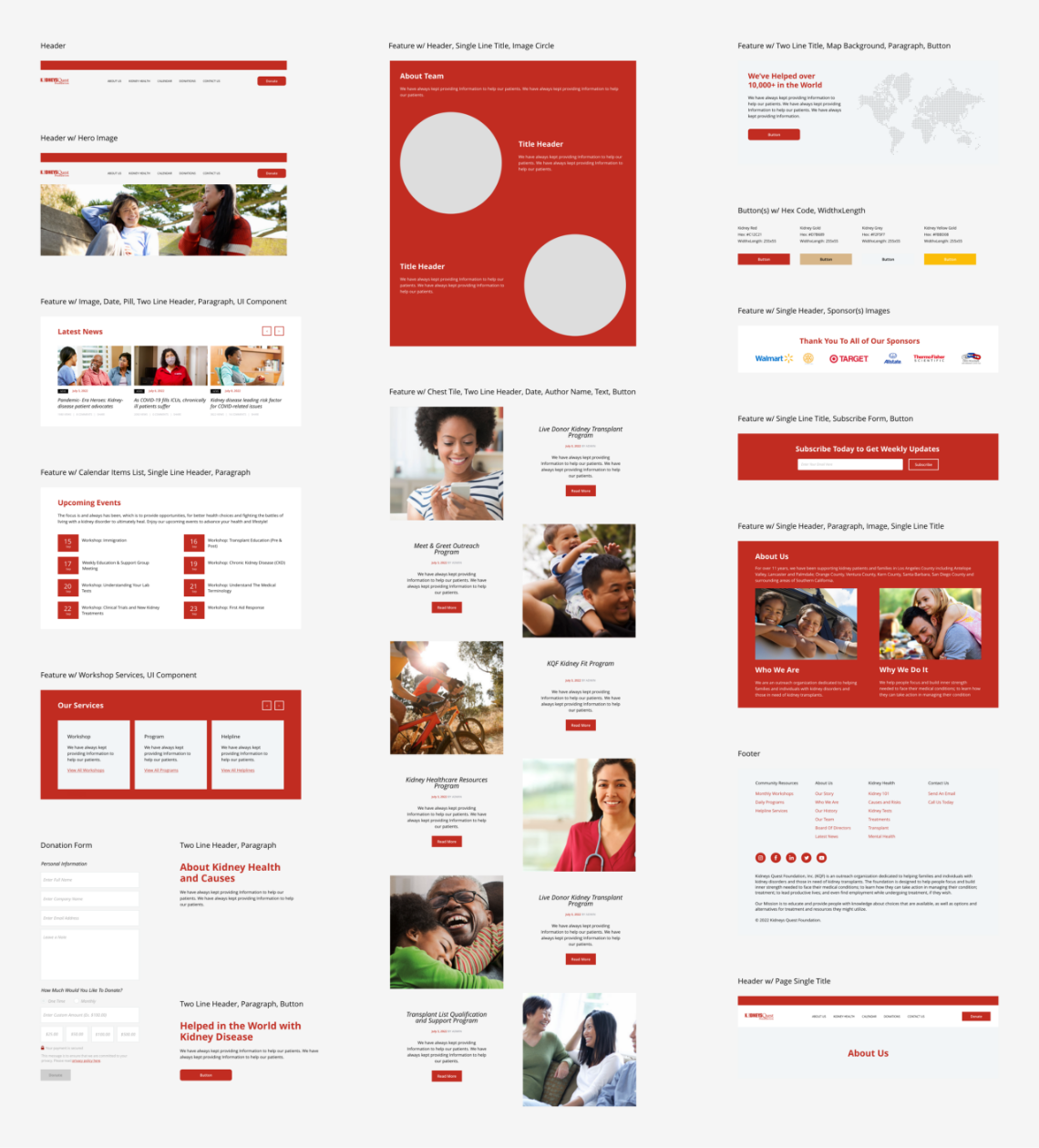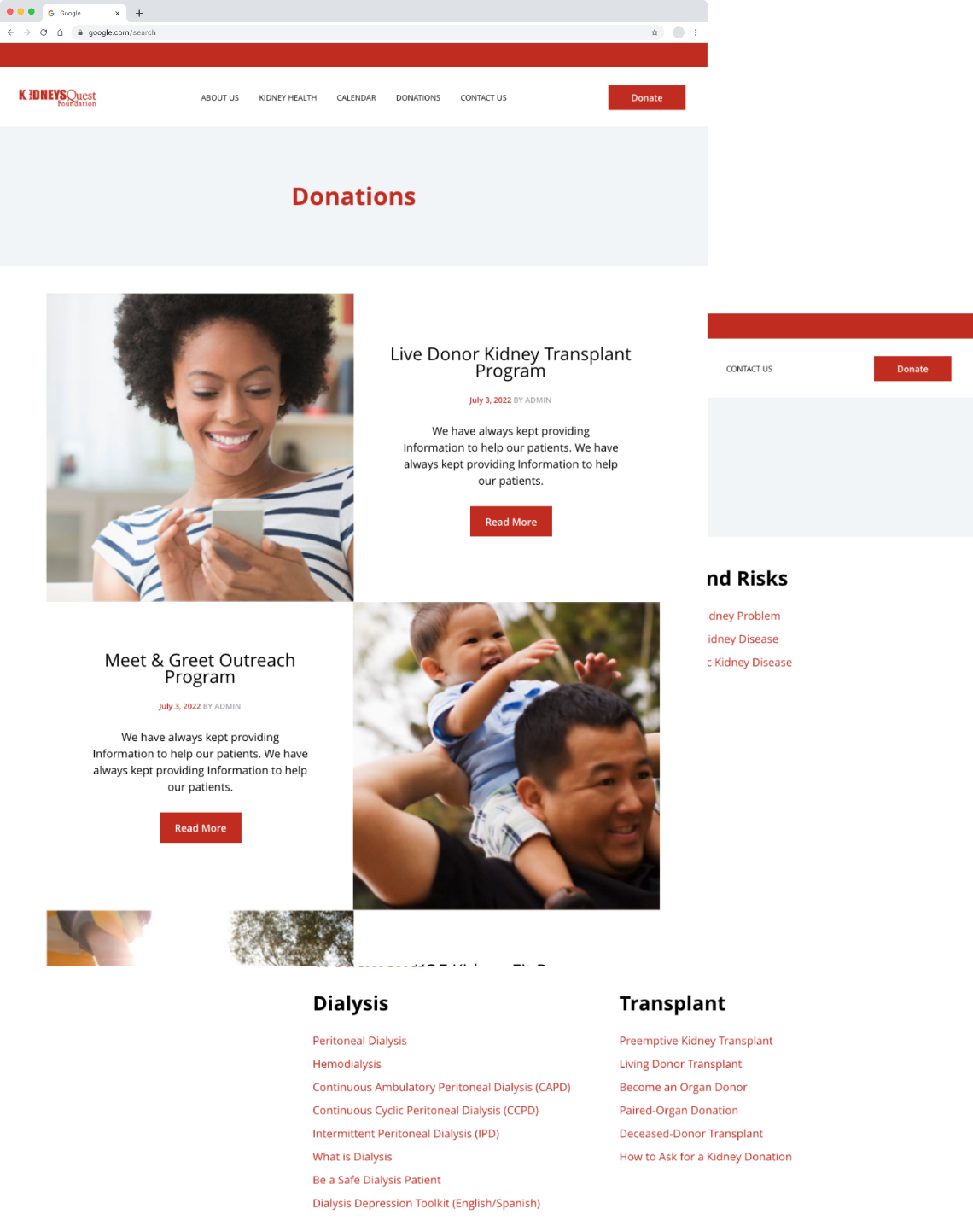Kidneys Quest Foundation
Website Application: UX/UI, Marketing Strategy, Design System, Proof of Concept
Kidneys Quest Foundation, is an outreach organization dedicated to helping families and individuals with kidney disorders and those in need of kidney transplants. The foundation is designed to help people focus and build inner strength needed to face their medical conditions; to learn how they can take action in managing their condition, treatments – to lead productive lives and even find employment while undergoing treatment.
For over 16 years, Kidneys Quest Foundation have been supporting kidney patients and families in Los Angeles County including Antelope Valley, Lancaster and Palmdale; Orange County, Ventura County, Kern County, Santa Barbara, San Diego County and surrounding areas of Southern California.
Their mission is to educate and provide people with knowledge about choices that are available, as well as options and alternatives for treatment and resources they might utilize.
The goal for this website is to support and direct kidney patients when they feel they don’t know how to get to that next step. Which includes resources to reference when lack of information is needed, alleviate some of the fears and stress of living with a kidney disease. Also, helping patients navigate the healthcare, medical and social service systems throughout their journey – showing them “we’re in this together”.

Results & Outcomes
– A fully design website;
– Able to retain current users, which resulted in an increase of the marketing budget to assist new patients and confidently scale;
– A developed brand asthetic;
– Clear content to ensure the highest care for all kidney patients and family;
– Ability to develop visual identity for marketing methods and techniques.

Process
The UX process involves analyzing client input to create a user-centered design. This includes gathering information from clients about their goals, needs, and preferences.
Once the information is collected, it is analyzed to identify patterns and themes that can inform the design process. This information is used to create personas, which represent the target audience, and user flows, which illustrate the steps users take to achieve their goals.
By analyzing the client input and creating a user-centered design, UX designers can create products and services that meet the needs and expectations of their users.
2. Gathering Requirements
We conducted stakeholder interviews to understand the business needs and high-level goals to develop a ux strategy. Some of the techniques we considered for getting the most before designing: • Set goals, post extraction of information, to know business and expectations.
• Bring in stakeholders to understand their role and what they want to achieve.
• Document the interview notes and video/audio recordings (with permission).
Conduct daily design sessions to gather feedback.
3. Wireframes
Based on the requirements and the initial input, we started working on visualizing a rough websote structure, i.e. wireframes and user flows. We then iteratively moved from rough sketches to high-fidelity wireframes, thereby aligning our design vision among the key stakeholders.

4.Prototyping and Usability Testing
In order to validate some of the assumptions we had on the contents of the key pages, we’ve conducted a series of user interviews. Which allowed us to gain a deep understanding of alot of users core pain points to alleviate their issues with the current state of technology usage.
5.Component Library
Kidneys Quest Foundation did not have an existing component library so we had to establish one. Throughout the process we created custom components to ensure a consistent and quality experience. Once the components were created we put them in a library to be reusable when needed. It also allowed the Kidneys Quest Foundation to utilize them for marketing materials.

5. High Fidelity
After going through our ux process, we produced well-defined high-delity designs. The goal for the high fidelity designs even after a step of user research via design session is to allow us to create a prototype version to test, gather feedback and implement feedback post release then iterate. Until the design reflected users needs and met the stakeholders vision, then proceeded to refine and polish the designs until their completion.


Conclusion
The last step before transferring the designs into development had to do with more validation. As such, we had our designs tested by both the client and our internal design team to tackle the remaining potential flaws.
After completing the design work, we then organized all of the deliverables for development. The handoff files largely consisted of style guides, research summaries, prototypes, and other artifacts. Not to mention, we hand-coded and delivered the website ourselves.